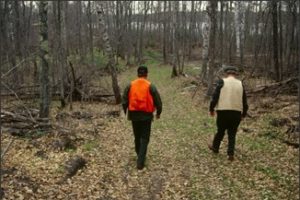
Meet the Ottmann’s: “Doing the Math” of Ownership

“We wanted a piece of Wisconsin for our family to enjoy. We also intend to make it better.”
Barry and Susan Ottmann live in McFarland, Wisconsin, and 3 years ago bought 80 acres of land in Crawford County. The first couple of years have been mostly about “the math” of ownership. For them, the land purchase was an investment. Everything after that—the taxes and land care—is an expense, at least in the short-term. In their minds, these annual expenses subtract from the investment bottom line. This is where “support,” as Barry calls it, enters in.
The Ottmanns have 50 acres of woods and 30 of tillable land. They rent the tillable land and have completed federal paperwork to ensure the farmer’s price support. This experience made an impression on Barry.
“Most farmers in our area are connected to the federal system. I don’t think a lot of landowners even know about it, let alone know it supports woodlands, too.” Barry called Karyl Fritsche, District Conservationist with the Crawford County NRCS (Natural Resources Conservation Service), to get the ball rolling.
Taking advantage of EQIP
They identified an opportunity for support through the Environmental Quality Incentives Program (EQIP), which provides flat-rate funding of dozens of practices, including plan writing, invasive species control, tree planting, and prescribed burning.
Support includes a professionally written plan, either called a CAP (conservation activity plan) or FMP (forest management plan). The Ottmanns secured funding for a plan and connected with Thomas Wyse, a forester with Kickapoo Woods Cooperative and a certified TSP (technical service provider) for NRCS.
Thomas and Barry walked the woods and discussed opportunities. Barry recalls, “I learned I have a couple invasive species, an area of soil erosion, and that I need to thin the woods to help the best trees.” Based on the plan, the Ottmanns are now seeking funding to support practices to “make the place a little better.”
Barry summed up his math this way. “We see the federal support for conservation practices protecting our investment by offsetting our taxes and improving the land.”
